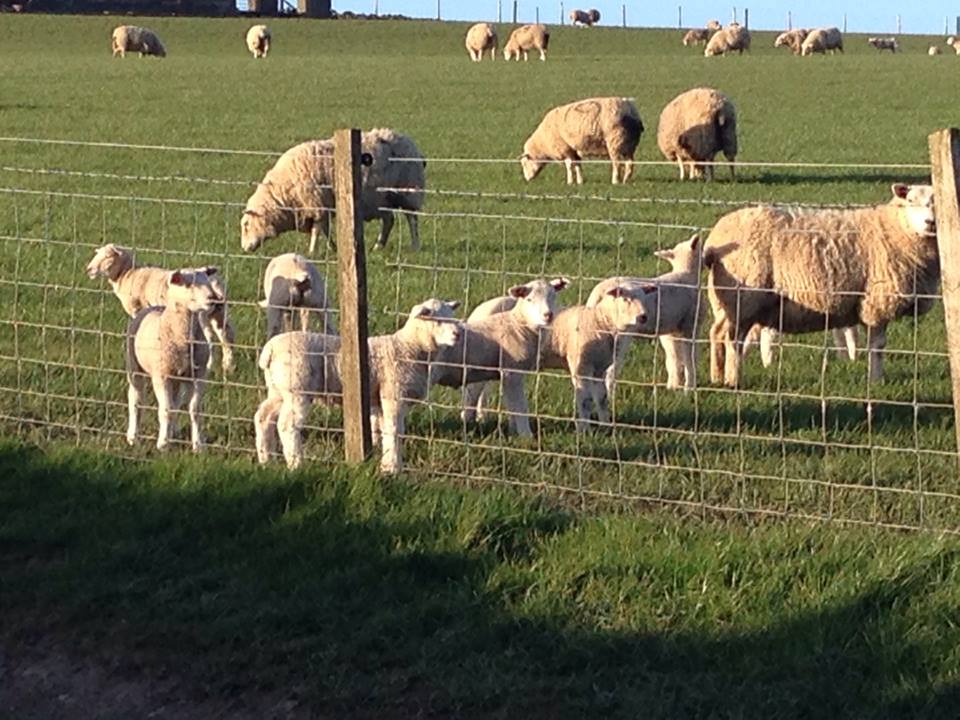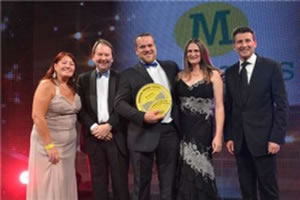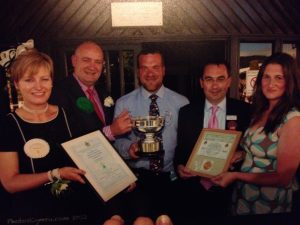Dinas Island
The Farm
The farm is split over three holdings, some owned and some tenanted through the National Trust.
Our land is predominantly coastal with a southerly aspect and lies around 300ft above sea level.
Of the 600 acres, two thirds would be classed as productive grassland and the remaining third being environmental ground consisting of coastal grazing, wet ground and hay meadows.
After receiving a RWAS sponsored Nuffield award in 2005, we set about changing the farming system to be able to survive without subsidies.

Indoor feed costs are kept low by mixing our silage bales in a mixer wagon. Ewes are fed and housed according to their pregnancy scanning results.
Within 24 hours of birth, the lambs are tagged, weighed and recorded to their mother, ewes are continually foot scored throughout the year and at lambing time are scored on mothering ability, milk production and ease of lambing, they are promptly turned out onto the rested grass at a rate of 5 ewes/acre.
All paddocks average 24 acres and are split with sheep net in the middle, the ewes are turned out equally between the two halves. After three weeks the two halves are divided into 6 and 120 ewes are then mixed together and rotated around the 6 four acre paddocks until weaning.
The lambs will be weighed every 8 weeks to collect growth rate data and to monitor Faecal Egg Counts
All grass is measured and recorded, and surplus grass is taken off as haylage bales for the winter. Through recording the grass, under preforming fields are reseeded (on average every 10 years). P&K is rectified at this point with the use of farm yard manure which is ploughed in, then a purpose made high sugar grass mix with plantain, chicory and clover is sown. The newer leys are used to finish all lambs off grass within the same year they are born. One application of 75 kg per acre of phased release fertilizer is used per annum.
Measuring and analysing data is an important tool within our farming practice, it enables us to monitor everything that is going on within our flock and grass growing system. It enables us to keep a high health status within our flock and to spot any climatic or growth changes with our grass.
Farming Achievements
2016
Breeding AberMax
2015
2014 Award
2012

2012

2012

2010
2009
2005
2001
Dinas Island Farm
2500 Lleyn ewes

